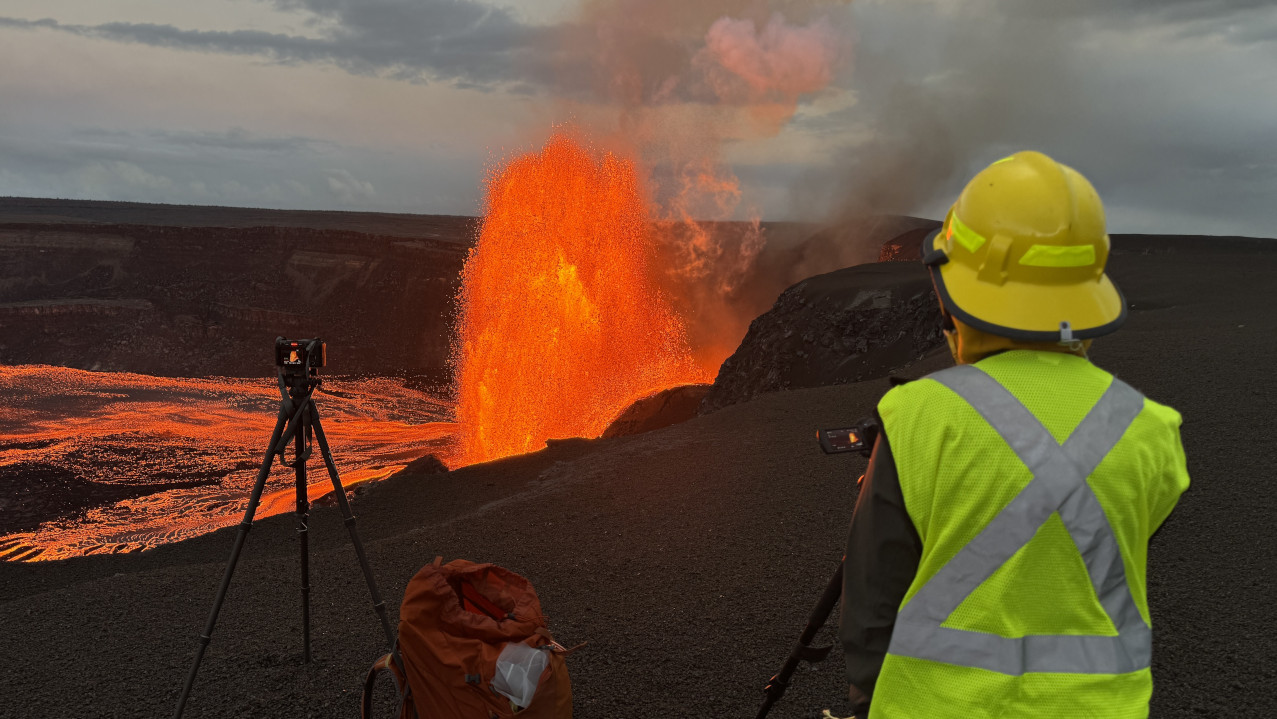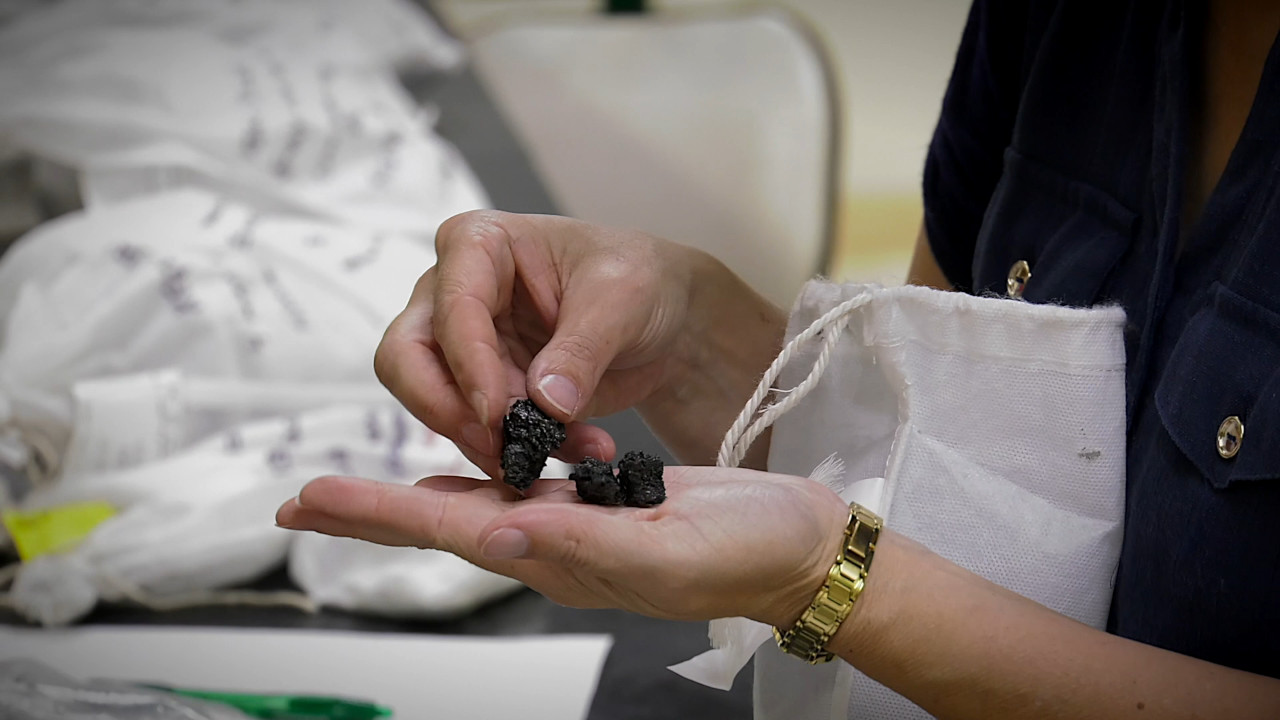(BIVN) – New video released by the USGS Hawaiian Volcano Observatory shows a close-up view of Episode 23 in the ongoing eruption at the summit of Kīlauea. High fountains reached over 1,000 feet, or 300 meters, and lava flows covered half the crater floor.
Another video published by the observatory shows a timelapse from a webcam taken on Sunday, May 25th. After six-hours of sustained activity, the episode came to an end on that same night.
On Tuesday, a large white plume was seen, billowing from the summit vents. The eruption is once again paused, and inflation has resumed, suggesting the episodic pattern will continue.

“USGS Hawaiian Volcano Observatory geologists observe the episode 23 lava fountaining at the summit of Kīlauea from the western caldera rim on May 25.” (USGS photo by M. Patrick)
On Tuesday, the University of Hawaiʻi released video of an interview with Steven Lundblad, a geology professor at UH Hilo. Lundblad provided some insights into why the volcano has settled into this eruptive pattern, and how scientists are working to learn more.
“Kīlauea started erupting right before Christmas time 2024,” Lundblad explained. “So what tends to happen is the pressure builds up below the summit of Kīlauea because there isn’t an outlet. At some point the magma makes it to the surface and since it has a fair amount of trapped gas in it. It is erupted out in a fairly explosive manner.”
“We’ve had fountains up to 1,000 feet high during some of the episodes,” Lundblad continued. “After that gas is kind of released and some of the pressure is released then the lava comes out and tends to cap over the top and that cycle restarts. So we’re kind of in this repeatable pattern where about once a week we have an eruptive cycle and then in between there’s enough of a kind of a cap on that magma chamber to kind of start that pressure building again.”
“One of the other things we do,” Lundblad said, “is collect samples and the USGS Hawaiian Volcano Observatory scientists do this. What we do here at UH Hilo is help them by looking at the chemical composition of the material that comes out to see how the eruption is evolving over time. And so that’s a little bit of a way to predict the longer-term processes that might be going on for future eruptions whether within this eruption cycle or down the road and how they compared to last month, last year, five years ago, 10 years ago and what might be changing at the volcano.”
Lundblad said says the current eruption is an interesting one, and it follows a similar pattern to some of the longer-lived eruptions at Kīlauea.
“When Puʻu ʻŌ’ō started erupting in 1983, and it erupted for 35 years, the first initial phases of that eruption had many high fountaining episodes before it kind of settled down into a pattern where it was lava flows coming out and then running down to the ocean,” Lundblad said. “Many people are familiar with that because it was a great place to go look at lava. Same thing happened in 1959 at Kīlauea Iki. That eruption occurred for about a month or so and it was punctuated by a whole series of high fountaining events with this. And then in 1969 at Mauna Ulu, again the early phases of that eruption had kind of this episodic high fountaining event.”
“So it’s possible that the volcano will continue to erupt at the summit for a long period of time,” Lundblad said. “And maybe we won’t see the similar type of high fountaining but we may just continually have lava flows building up the lava lake that exist there.”


by Big Island Video News7:08 am
on at
STORY SUMMARY
ISLAND OF HAWAIʻI - A geology professor at the University of Hawaiʻi at Hilo, Steven Lundblad, provides insights on the current pattern of activity at Kīlauea.